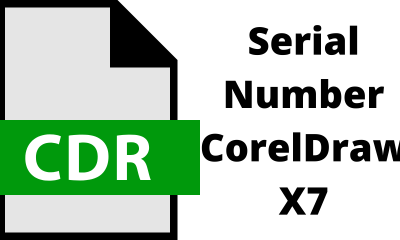Education
Intellectual Property 101: Understanding Your Rights As A Creator
Published
4 months agoon

Intellectual Property (Trademark)
Intellectual property (IP) is the lifeblood of innovation, serving as the foundation for economic growth in today’s knowledge-based economy. However, the increasing complexity and global nature of IP issues have led to a rise in intellectual property litigation. Companies are now more vigilant in protecting their intangible assets, leading to a higher demand for skilled intellectual property litigation attorney.
In this rapidly evolving landscape, it’s crucial for businesses to understand the nuances of IP law and capitalize on their intellectual assets while safeguarding them from infringement. Intellectual property litigation attorneys play a pivotal role in navigating this complex terrain, offering strategic counsel and representing clients in contentious disputes. As technology continues to disrupt traditional business models, the importance of safeguarding intangible assets through diligent legal representation has never been more pronounced.
The dynamism of intellectual property rights demands a proactive approach to protection and enforcement. Collaborating with seasoned intellectual property litigation attorneys can provide organizations with a competitive edge by ensuring their innovations are safeguarded and their rights vigorously defended in an increasingly litigious environment.
Why Understand Intellectual Property Rights?
- Protection of Creative Works: Understanding intellectual property ensures creators can protect their original works from unauthorized use or exploitation by others.
- Monetary Value: Intellectual property rights enable creators to monetize their works through licensing, sales, or royalties, contributing to their financial well-being.
- Recognition and Attribution: Intellectual property rights provide creators with recognition and credit for their creations, fostering motivation and creativity.
Benefits of Understanding Your Intellectual Property Rights:
- Legal Protection: Knowing your rights helps prevent others from infringing on your work, providing a legal framework for action against unauthorized use.
- Monetization Opportunities: Understanding intellectual property rights opens avenues for commercialization, allowing creators to profit from their creations through licensing or sales.
- Preservation of Integrity: Protecting intellectual property safeguards the integrity and originality of creative works, ensuring they’re not misrepresented or distorted.
The Basics of Intellectual Property Rights:
1. Copyright:
Copyright protects original works of authorship, including literary, artistic, and musical creations. It grants the creator exclusive rights to reproduce, distribute, and display their work, usually lasting for the creator’s lifetime plus 70 years.
2. Trademark:
Trademarks are symbols, names, or designs used to identify and distinguish products or services. They protect brand identity and prevent others from using similar marks that may cause confusion among consumers.
3. Patents:
Patents protect inventions or discoveries, granting exclusive rights to the inventor for a specified period. They provide the right to exclude others from making, using, or selling the patented invention without permission.
4. Trade Secrets:
Trade secrets encompass confidential information, such as formulas, processes, or customer lists, providing a competitive advantage. They’re protected by keeping the information confidential.
FAQs about Intellectual Property Rights for Creators:
1. What is the difference between copyright and trademark?
Copyright protects original works of authorship, while trademarks safeguard symbols, names, or designs used to identify products or services.
2. How do I copyright my creative work?
In many jurisdictions, including the United States, copyright protection is automatic upon the creation of the work. However, registering your work with the copyright office provides additional legal benefits.
3. Can I copyright an idea or concept?
Copyright protects the expression of ideas, not the ideas themselves. To be eligible for copyright, an idea must be in a fixed, tangible form of expression.
4. How long does copyright protection last?
Copyright protection typically lasts for the creator’s lifetime plus an additional 70 years, though the duration may vary based on the type of work and jurisdiction.
5. Can I use copyrighted material if I give credit to the creator?
Giving credit or attribution to the creator doesn’t automatically grant permission to use copyrighted material. Permission must be obtained from the copyright holder unless the use falls under fair use or another exception.
6. What can I trademark?
Trademarks can include words, phrases, symbols, logos, or a combination thereof that distinguish goods or services in the marketplace.
7. How long does trademark protection last?
Trademark protection can last indefinitely if the mark continues to be used and maintained properly. Renewal filings are required at specific intervals to maintain protection.
8. What is the process of obtaining a patent?
To obtain a patent, inventors must file a patent application with the relevant patent office, disclosing the invention’s details. The patent office examines the application to determine its novelty and non-obviousness.
9. Can I patent an idea without a prototype?
Patents protect inventions, not mere ideas. While a prototype is not always necessary, a patent application should sufficiently describe how the invention works and its uniqueness.
10. What constitutes a trade secret?
Trade secrets include information that provides a competitive advantage and is kept confidential. This can include formulas, processes, customer lists, or proprietary technology.
11. Can I protect my intellectual property internationally?
Intellectual property protection varies by country. International treaties, like the Berne Convention for copyright or the Paris Convention for patents, provide some level of international protection.
12. How do I enforce my intellectual property rights?
Enforcement methods vary but may include sending cease-and-desist letters, filing lawsuits, or pursuing alternative dispute resolution methods to stop infringements.
13. What is fair use in copyright?
Fair use is a legal doctrine that allows limited use of copyrighted material without permission, typically for purposes such as criticism, commentary, news reporting, teaching, or research.
14. Can I sell or transfer my intellectual property rights?
Yes, intellectual property rights can be sold, licensed, or transferred, either wholly or partially, to others through contracts or agreements.
15. Can I protect my intellectual property without legal assistance?
While it’s possible to protect intellectual property independently, legal assistance from intellectual property attorneys or experts is advisable, especially for complex matters or legal proceedings.
Conclusion:
Understanding intellectual property rights is crucial for creators to protect their original works and benefit from their creative endeavors. By grasping the fundamentals of copyrights, trademarks, patents, and trade secrets, creators can safeguard their creations, ensure fair recognition, and leverage their intellectual property for commercial success. Being well-informed empowers creators to navigate the complexities of intellectual property law, enabling them to assert their rights confidently and maximize the value of their innovations and creative works.

Trending

 Banco4 years ago
Banco4 years agoBanjercito

 Gaming3 years ago
Gaming3 years agoNBA 2K21 Best Controller Settings

 Social Media3 years ago
Social Media3 years agoHow to prepare a publication schedule

 Indonesia4 years ago
Indonesia4 years agoSerial Number CorelDraw X7 Aktivasi Kode 64/32 Bit | Dijamin Bisa

 Filmora4 years ago
Filmora4 years agoWondershare Filmora 9 Activation Key and Email Free 2020

 Education1 year ago
Education1 year agoJuan Monteverde on the Unexpected Costs of Corporate Fraud

 Indonesia3 years ago
Indonesia3 years agoMangastream – 15 Alternatif Terbaik untuk Membaca Manga Online [2021]

 Education4 years ago
Education4 years ago28 Best Bane Quotes From The Movie “The Dark Knight Rises”
You must be logged in to post a comment Login